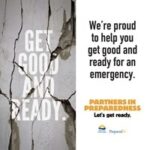Emergency Food Supplies — How Much Do You Need to Store?
It’s no secret – it’s a good idea to have emergency food storage on hand at home. From natural disasters like hurricanes and tornadoes to common power outages, there are many reasons to keep an adequate supply of non-perishable and easy to prepare food on hand. For most people, the question is not “Do I need an emergency food supply” but “how much should I store”?
While every situation is different, you can usually get a good idea of how much to keep on hand by thinking about the number of people (and pets) in your household, where you live, and the likelihood of a power outage or food shortage problem. Start with aiming for 24 hours-worth of food and water as a bare minimum, and work your way up from there, based on the following factors:
People and Pets: If you are planning emergency food for a single adult, you’ll need a lot less food – and a lot less storage space – than you will for a family. The larger the family, the more you’ll need to keep on hand, including food for pets and specialty foods like baby formula and kid-friendly meals. Don’t forget sanitary items, prescriptions and contact lenses for every member of the family as well.
Location: Live in hurricane prone New Orleans? History has shown that you need a hefty amount of food set aside in case the next Katrina rolls ashore. Even if you are not directly affected by the storm, simply being in the path can disrupt supply chains for days or even weeks, so stock up and you won’t have to worry about going without. Take a look at how your area is affected by seasonal changes and storms, and stock your emergency food and water accordingly.
Space: Can you dedicate an entire storage area to your emergency food stash? The space you have available will help you decide how much to keep on hand. In most modern homes, there is generally a spare closet or pantry that can serve as a food storage spot, but if you are in a small apartment where space is a premium, you may need to store fewer or more compact items.
Cash: How much can you afford to spend on your emergency food and supply stash? The easiest way to build up a supply is to work slowly over time – even if you can only invest a small amount, you can start creating an emergency supply kit you can depend on.








